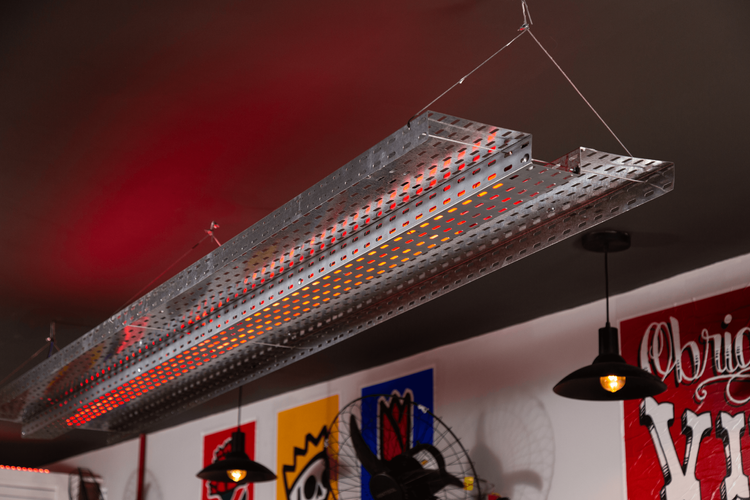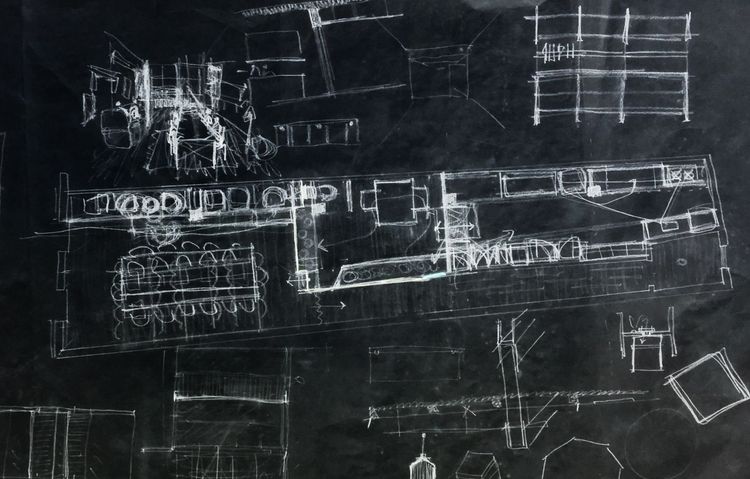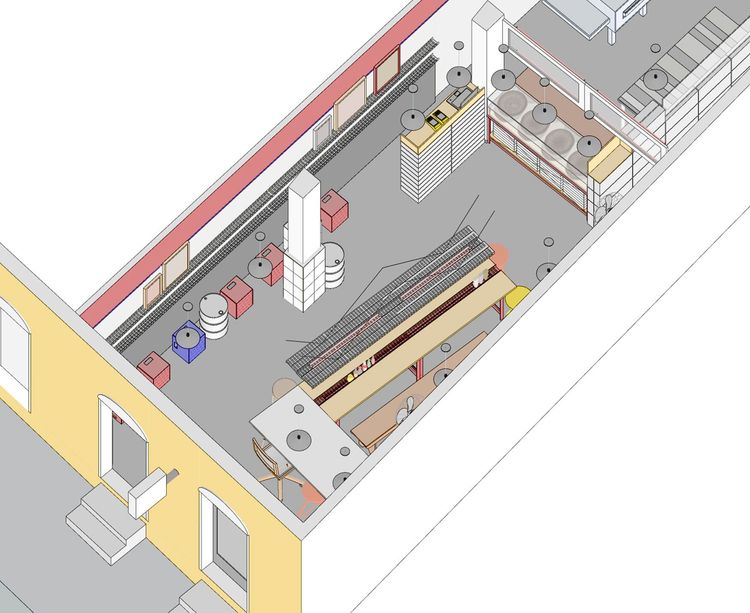














ZIGGY PIZZA PUB
- Year: 2023
- Location: Salvador, Bahia - Brazil
- Area: 70 m²
- Category: commercial
- Photo: ©RUÍNA / ©Brenda Matos
Project located in the historic neighborhood of Santo Antonio Além do Carmo in Salvador - BA.
The project in a rented property required minimal but strategic interventions to configure a new space. Ziggy Pizza Pub should be a relaxed and plural place, offering affordable pizzas, an art gallery for exhibiting local artists and live music.
From the beginning, the reuse of materials was understood as a design methodology, in such a way that key elements of the space were defined and designed based on the offer of materials provided by Arquivo SSA, a materials reuse start-up, and A Ponta, one of the most emblematic junkyards in the city of Salvador.
The project is configured by four key pieces of furniture that define the space and its uses: a single table to serve customers, a central lamp, a service counter and a pizza preparation table.
With the aim of bringing the space closer together and democratizing it, a single table serves as support for all customers at Ziggy. The table top arises from the combination of pine board (3m x 0.3m x 2cm) and standard metal cable tray (3m x 0.1m x 5cm), two materials whose factory lengths are the same (avoiding cuts and waste of material).
Above the table, the central luminaire is positioned, which is made up of three cable tray sheets fixed together. Commonly used as a support element for the electrical infrastructure, in this case the cable trays are subverted from their original role and themselves configure the design of the lamp.
On the sides of the room, the electric trays are used as shelves to support the paintings and various objects displayed at Ziggy with an open gallery proposal.
The counters that house the pizza cashier and showcase were designed by incorporating old reused tempered glass.
The pizza preparation counter open to the public mentions the combination of different ingredients and flavors. Different pieces of stone (granite and marble) were used in it, which were combined and fixed to form the top of the bench. The structure was made from scrap metal specialized in stainless steel elements.